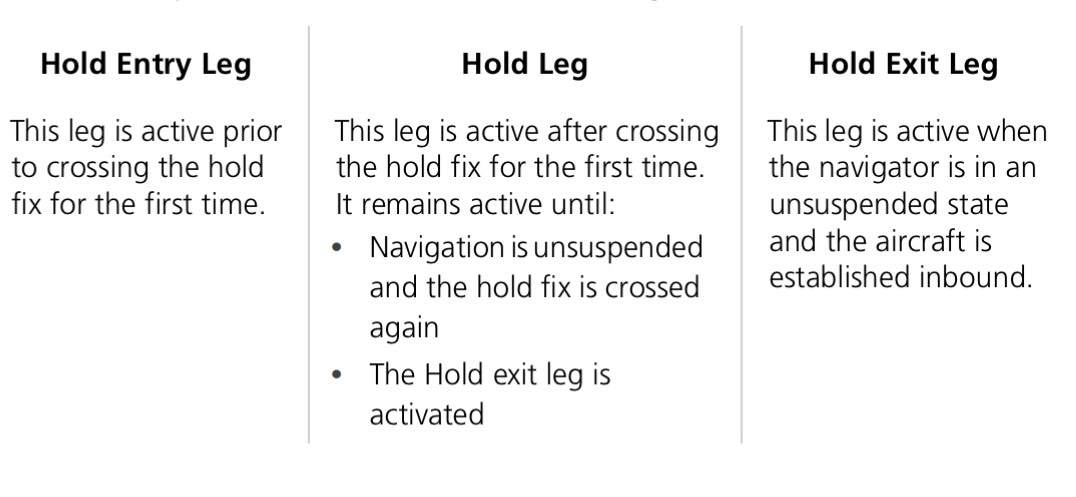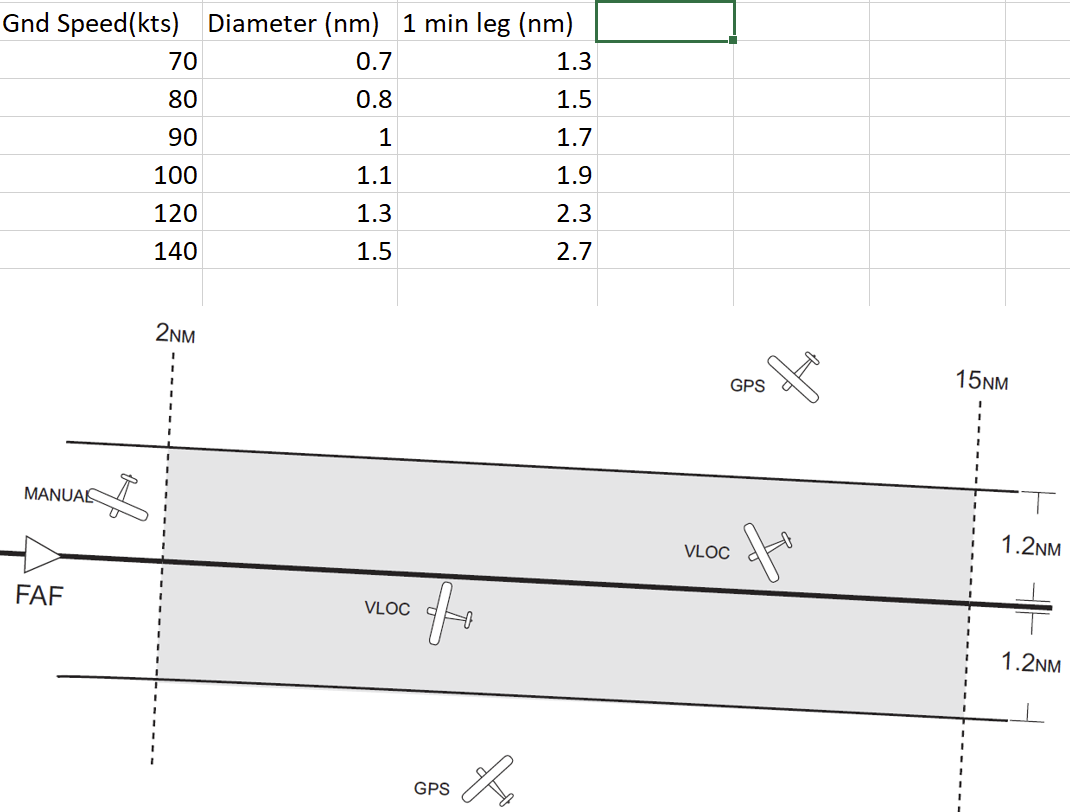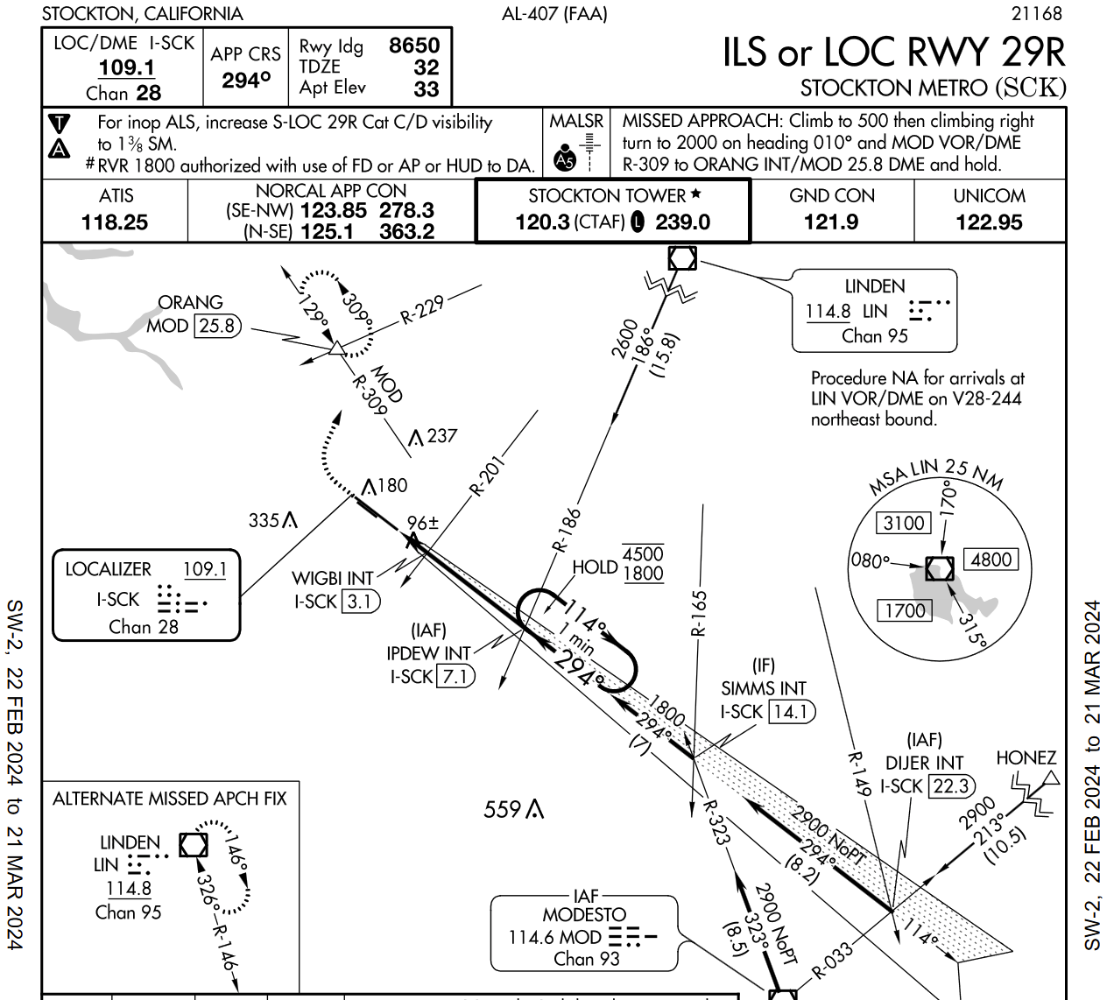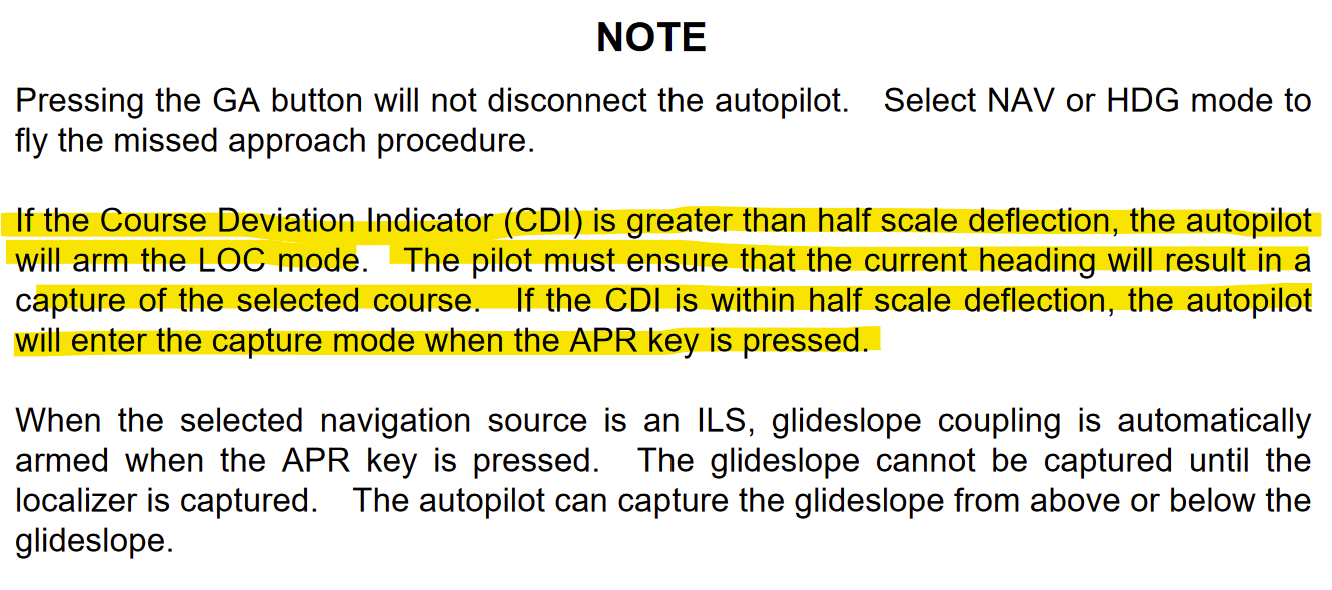-
Posts
1,301 -
Joined
-
Last visited
-
Days Won
10
Content Type
Profiles
Forums
Blogs
Gallery
Downloads
Media Demo
Events
Everything posted by Marc_B
-
@PT20J The thing that made me think that APR is what prevents the mode reversion, is that if I load an ILS approach, am in NAV mode on a feeder route and forget to press APR on the GFC500, then it will revert to ROL PIT when I switch the CDI (or when CDI switches automatically) coming up to LOC course intercept. It will blow right though the LOC. This I know for sure. If a LOC approach is loaded and it is left in NAV, would that prevent reversion?? Not sure. But I think that it also depends on if the LOC course is armed...i.e. when you press APR it arms LOC in white. From the AFMS it says press NAV key and verify LOC armed for a localizer approach. So is it LOC is armed that prevents reversion or APR is armed? But I don't find that the Aviation Trainer reflects the actual behavior of the GFC500 with this very well.
-
So Hold entry leg allows a constraint and hold exit leg allows a constraint. I think a HILPT just has a hold entry leg and a hold exit leg so the constraints/VNAV sequences...my perception of the slide shown at Garmin (comments above) was that VNAV unavailable with hold leg/suspended hold. "Heading legs" and "altitude terminating legs" I've seen programed with missed approaches and with departure procedures. I've never seen a way to program these myself. But both of these would be typically seen with climbing, and not with descents; Garmin definitely pointed out that the VNAV is an enhanced descent mode only.
-
I think the clarification is that an altitude constraint to enter a hold is okay. But I’m not aware of the GTN/GFC500 being able to make VNAV descent in a hold. If it’s a HILPT into an approach that’s not quite the same thing. VNAV will allow program of altitude constraint into the hold entry fix. But say you’re at 16,000 and you get “descend at pilot’s discretion, cross Waypoint A at 10,000 and descend in hold to 2000, then proceed to Waypoint B” I don’t think VNAV will do it. It will cross at 10,000 and then you’ll have to manage VS and bugged descent yourself inside the hold. I think it all depends on what hold “leg” is active. A hold entry leg has a constraint and you can use VNAV. Inside the hold (hold leg) does not from my understanding (i.e. when hold suspended and you're circling). The Garmin Trainer allows entry of an altitude constraint for the entry waypoint and for the exit waypoint. But it only descends when unsuspended. @PT20J & @donkaye Are you saying you are able to program a start hold constraint as well as a finish hold constraint to descend using VNAV inside the hold (while suspended)? VNAV is only for descent and the missed approach wouldn’t be VNAV but rather climbing. Sure, you can still plug in altitude constraints in your flight plan page, but that’s not VNAV. I set up the GTN to show active and selected constraints on the map in settings and show all constraints on the map on the G500TXi. Then you can easily see constraints coming up as well as using the Baro Minimums bug at times for an altitude bug for climbing (i.e. say on an ODP when you don’t wanna turn before “x” feet)
-
The training crew did mention that part of the issue with Transition to Approach is with extreme temp that the fixed glide path intercept may not be the same as the baro FAF so there may be a discrepancy that causes an issue. Made it sound like issue is matching up VNAV path to the GP to intercept smoothly is the issue.
-
A few VNAV limitations from Garmin I learned at training class… VNAV is unavailable if: -meeting the constraint requires a climb; -meeting constraint requires aircraft to exceed max FPA (6deg down) or max VS (4000 FPM); -it results in TOD behind the current position; -it is within a leg that does not support altitude constraints (holds, heading legs, altitude terminating legs); -it is for a waypoint past the FAF. Of course you first need to have all the basics met that are listed in the pilot guide… Enhanced VNAV will not function if any of the following conditions are true: - Navigation source is not set to GPS - VNAV not enabled on VNAV profile page - No waypoints exist in the flight plan with appropriate altitude constraints - Lateral mode is not actively engaged to GPS - OBS mode is active - Dead reckoning mode is active - Parallel Track is active - Aircraft is on the ground - Aircraft is between the FAF and MAP of an approach. I find it strange that VNAV won’t work on GPS parallel track. Seems like it should be able to. The others seem pretty straightforward and obvious after some experience with it. Still no update regarding Transition to Approach. Of course the training team and development team are different so hard to say if this is in the works or not.
-
It looks like the erroneous settings were just "removed" from the visor in the original picture!
-
Surely there is a company that will create a decal for this. I've seen decals that have a clear backing you remove and you lay the decal down with a clear mask, then remove the mask leaving the labeling. I'm not quite sure what this is called...labeling, screen printing...or just a vinyl decal?
-
The only issue with the screw in lead plate is that it is thicker (taller?) due to the screw in leads and has more clearance issues in some applications. So double check your clearance before going that way to confirm you’re good to go. i went with Maggie when I installed a Surefly and have been happy.
-
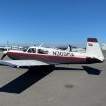
M20J - All Annunciators Illuminated
Marc_B replied to WheelPantsOff's topic in Modern Mooney Discussion
I ran into some annunciator issues with an install, but this was with new circuitry and it was some miss mapped pins. Long story short, the Test + and Test - pins on the back of the annunciator are for bench testing only. They should not be connected to power or ground. The electrical schematic for your aircraft will have the pin out for your unit. This doesn't necessarily match another Mooney model or even same Mooney but different SN range. So you need to pull the schematic for your SN. You'll notice on my schematic below that pins 4 and 14 aren't connected to anything in the ship and it should stay that way. If power was connected here and it fried the test circuit then you might need to send it back to IAI if you still have problems with the test button not working or working erratically. The test button should be just a momentary switch to connect bus voltage though the lights to validate that they all illuminate. Most of the circuitry isn't spelled out in the MSM as it only discusses the more complicated circuits. Quite a few of the indications are what Mooney called a Typical Positive Apply. Basically it just illuminated when aircraft voltage applied (in my case +28VDC) to the pin. This applies to many of them like boost pump, speed brake, stand by vacuum, prop deice, etc. The fuel comparator circuits are the more complex inside the annunciator and you'll find a description of those in the MSM. If you're continuing to have issues I'd reach out to International Avionics, Inc in Richardson, TX. The person I worked with was Kenneth Snowden; main number 972/417-2820. Annunciator_MooneyServiceManual.pdf -

Let the games begin - MAJOR Avionics Upgrade.
Marc_B replied to Pinecone's topic in Avionics/Panel Discussion
You could either have a custom piece made out of plastic, modify your existing, or call IAI and ask for a custom legend. Its basically a piece of clear plastic in two layers that has holes on the ends that accept the male post that screw the unit to the panel from behind. When you look close it's actually roughly done and basically a colored label that each light shines through...cut and stick. (SEE MY PIC EARLIER ON THE PAGE and you can see how each indication was a cut out) Given that LASAR sells the legends separate from the one and two row annunciators, I would imagine that IAI could easily make you a legend to your spec. All of the indication lights are simple white incandescent bulbs. The person I spoke with at International Avionics, Inc. was Kenneth Snowden; the main number 972/417-2820 if you go that route. Kenneth also services IAI voltage regulators found in a handful of Mooneys. DMax said if it was labeled IAI it needed to be sent back to IAI, so I did that at the same time as the annunciator (mine was overvolts and needed to be adjusted). -

Speedbrake does not fully retract
Marc_B replied to Fritz Kaiser's topic in Modern Mooney Discussion
Looking at the pictures of the units...can these be lubricated while installed? It seems that the worm gear may be more accessible from the top? Although I keep thinking that I've read that it's accessible from the bottom access panel and a long brush/stick applicator? Does anyone have any tips or tricks? Certainly if removed they look super easy to clean and lube. -

Speedbrake does not fully retract
Marc_B replied to Fritz Kaiser's topic in Modern Mooney Discussion
Looking at the drawings it shows the retraction spring and a part number. Century Spring Corp SPC-9529 is their part number and they can produce these...BUT, they are custom parts and would need a minimum of $800-900 order. Not sure if anywhere else would have these other than Precise Flight; and PF will replace them with service, not not sell them anymore. -

Let the games begin - MAJOR Avionics Upgrade.
Marc_B replied to Pinecone's topic in Avionics/Panel Discussion
The warnings and annunciations for certified aircraft issues baffle me. They make an LED bar that you can program that's thin and would be easy to mount above a glass panel but it's for experimental. @Pinecone I'm sorry your original plan didn't work out. The annunciator turned out to be the biggest hiccup for me and my shop as well... I spoke with IAI (they make all the annunciators for Mooney) when I went through this and thought that with my SN they could pull up the schematic for that unit...but they just have default 8 and 16 indication set ups for either 14 or 28VDC. They don't have your specific pin out (neither IAI nor I realized this at start). It then made sense why the Mooney Service Manual (MSM) called out some of the indications but didn't mention anything about the others, instead just mentioning "Typical Positive Apply" which was just basic +28VDC input (I have a 28V aircraft). I guess this gave Mooney latitude to customize the legend and wire up the box depending on how they set up the aircraft with their trim/avionics packages. Remote RNAV, LORAN cpld, Boost Pump, speed brake, Prop deice, pitot heat...those were labeled and wired by Mooney and are all basic "Typical Positive Apply". Even some of the more complicated indications are simple +28VDC inputs...i.e. "Hi/lo Vac" is wired to accept two +28VDC inputs where one indication (lo vac) flashes, and the other is steady illuminate (high vac). Meaning if you apply +28V to the pin for lo vac it will flash the indication and if you apply +28V to the pin for high vac it will be steady. The fuel indications are the most complicated. But you'll always find starting on the left, Gear down, gear unsafe, left fuel, right fuel... If you go this route: 1) snag your wiring harness info from the Electrical Schematic for your SN to find pinout order, 2) read the MSM about the circuits for the indications you have in order to understand what inputs can be wired to them, 3) and whatever you do, DO NOT wire anything to the Test+ and Test- pins on the unit...these are for bench testing and not for aircraft power and they have nothing to do with the test button on the left. Good luck! Hopefully you'll soon have things starting to be put together then the fun starts of getting to put it all in action! -

Let the games begin - MAJOR Avionics Upgrade.
Marc_B replied to Pinecone's topic in Avionics/Panel Discussion
FYI. The annunciator in the aircraft has a couple complicated circuits (i.e. comparator circuits for fuel, volts), but a lot of them are simple +28V (or +14VDC). Check out the Service Manual 24-39-06 for details. But the simple +VDC indications were left blank and filled in by Mooney depending on how the aircraft was set up. So these simple circuits can be wired a variety of ways and were only "changed" with the label on the face plate. You may be able to have your shop change some of the indications. In my case I needed to get rid of the comparator circuits and make room for more simple +VDC indications so I had to go through IAI to get one built to spec. Start power, speed brakes, pitot heat, prop deice, and alt air are all +VDC simple inputs. The internal wiring in the annunciator are all the same for those. -

Speedbrake does not fully retract
Marc_B replied to Fritz Kaiser's topic in Modern Mooney Discussion
Within the past year, Precise Flight also decided to "no longer sell any internal components for the speed brakes for liability concern." I reached out for a set of retraction springs and it's now a no go. So if you need service on the speed brakes, you'll more than likely need to send them in for comprehensive service. My guess is that it is easier for Precise Flight to just replace most of the components and circuits rather than try to troubleshoot issues. So instead of service they just offer complete rebuild and price accordingly. But you'd think for that price they should absolutely touch up the paint on the blades... -
I think this is spot on, and I’ve not had it revert when I switched manually with APR armed. EDIT: the more I think about it, I'm sure this has "rules" as well. Pressing APR: When I've manually switched the CDI, I've not got mode reversion, but I've also typically switched the CDI in an area where it goes to LOC capture. I've never tried it far enough out (greater than half scale) that the LOC mode is armed. (my testing has either been on FAC or intercepting the FAC) However, this still reads to me that if APR mode pressed and you're tracking on GPS, that LOC would be armed, mode not reverted, and it would automatically switch when less than half-scale deflection.
-
Looking at SB100 series info and confirmed with Precise Flight that they are recommending Aeroshell22 now instead of AS7 and definitely not spray lube. But regarding the return spring they said they are “no longer offering any internal components due to concern for liability.” Instead they are only offering full service for $1999. Sounds like the part is a Century Spring Corp plated return spring; I believe PN HD-01691. Does anyone have an alternate part source for this? I was lubricating the SB leading up to annual and noticed the return springs are getting weathered and I don’t think they have ever been serviced other than occasional lube? Inquisitive for future reference / if I should just expect for having to send them with any issue for comprehensive service plan?
-
@donkaye I thought Skip's comment earlier in this thread made it sound like some installs the TOGA button is not linked to the GTN to also "Activate Missed Approach" in addition to Go Around Mode with wings level ROL and PIT up 7 deg? If TOGA only ROL/PIT up, then the pilot has to make sure they activate missed and actually fly passed the missed. i.e. if pilot just read missed instructions, went missed early by TOGA, then immediately started missed approach instructions that might be dangerous. Having the GTN sequence makes it easier for me to 1) take care of vertical flight (climb, cram, cleanup) then 2) allow the GTN to take care of lateral course (press NAV/HDG) pretty easily... With autoswitch, the thing you always must do is arm APR. The most "disruptive" (but immediately informative) issue for me has been if I forget to press APR in GFC, then when the CDI changes the mode reverts to ROL PIT. But again, this immediately shows me I goofed and I just press APR. If I was manually switching CDI, I"d do it once I was established on FAC and if i switched CDI then without APR armed then the mode would still revert, but it would "seem" like I was still flying what I should (unless a lot of wind drift)...until I didn't capture GS.
-
Went of for a few approaches after work this evening for some testing using Activate Missed Approach from the GTN: 1) Coupled ILS approach, Level: LOC / ALT 7000 (GS armed), APR lit. --> Activate Missed Approach = APR light off and AP in ROL (LOC flashing yellow) and ALT 7000. Just to make sure the altitude bug had nothing to do with the ALT mode I was at 7000 but bugged the FAF 6600. 2) Coupled ILS approach, VS descent to FAF: LOC / VS -500 (GS and ALTS armed), 6600 bugged, APR lit. --> AMA = APR light off and AP in ROL (LOC flashing yellow) and VS -500 active (ALTS armed). It descended to and captured 6600 ft with ROL, ALT 6600. 3) Coupled ILS approach, past FAF with GS captured and descending: LOC / GS --> AMA = APR light off and AP in ROL / PIT (with LOC and GS flashing yellow) but with ALTS still armed although bugged altitude was 7000 ft missed approach 4) Coupled RNAV approach, GPS / ALT 7000 (GP armed), APR lit --> AMA = APR light off and AP in GPS / ALT 7000. I had to go back to the Activate Missed Approach to see if it actually did anything and now the AMA was greyed out. So general gist: Lateral Mode: if you're in GPS and hit AMA there is no reversion; but LOC reverts to ROL wings level. Vertical Mode: if you're in ALT or VS and hit AMA there is no reversion, but GS/GP reverts to PIT and captures your current pitch. I think that GTN Activate Missed Approach makes a LOT of sense for an early missed, a missed with a mandatory descent (i.e Skip's comment about KBFI), and for a nonprecision approach where you are level in ALT and have time to get things set up exactly as you want. If I was going missed at the DA/MAP you bet I'd already have my Missed approach altitude set, click TOGA, then would be clicking NAV (or HDG) after I'd powered up and cleaned up. BIG GOTCHA though, I didn't realize there were some installs where TOGA was not set up to sequence the GPS missed approach. If that is your set up then you have to make sure that you actually fly through the MAP before going missed. Since I'm set up with TOGA sequencing the missed as long as I hit NAV it will fly me through a safe area. There are plenty of mountain airports in Colorado where this is an absolute necessity. Regarding Autoswitch CDI. I've experimented with both enabled and disabled. I certainly understand why you might want one vs the other. Fortunately this is on the system page and you can change in flight at will. I think it might change my perception if it was hard coded like transition to approach and permanently set one way or the other. But that being said, I like that this allows automation and sequencing of several things at once (CDI switch/LOC capture), and also helps to focus my flow at that moment so I can check multiple things off all at once. i.e. LOC freq is set, APR was armed, turning inbound and LOC captured. You pick these things up not sequentially, but at common time when the AP sequences to the segment leading to the FAF. In trying to squirrel around with this and figure out the faults, I've found that it pretty reliably sequences LOC, CDI Switch, and turning inbound at the same point on the approach. So this makes it VERY obvious that its either 1) working as intended, or 2) I screwed something up. And it's at a point usually where I can either adjust, hand fly, or decide to go missed early in the game. Personally I'd rather not figure that out at the FAF when I don't capture GS cause then my best option is probably go missed. BUT I think that the main problem with autoswitch is that it has rules. Approach loaded, LOC tuned, APR armed, inside the "box", AND segment to FAF sequenced. That's a lot of potential for error. But once you understand the rules it makes much more sense. HOWEVER, even if you mess it up, or would rather push CDI yourself...you can still manually change CDI at will, whenever you want.
-
I think 1 minute holding at the FAF is an issue all the way around if you're entering parallel. If you're below 104 kts then you're inside of the 2nm from the FAF and it could be problematic for autoswitch regardless depending on when the GTN sequences to FAF as active waypoint. *** But the good part is that you can manually switch CDI yourself and if you have APR armed, then the GFC500 will then immediately capture LOC. And if you don't switch manually, it flashes and lets you know your assistance is required! Diameter = diameter of std rate turn 180 in hold (1min) = distance laterally from FAC on outside of hold
-
I'll have to pay better attention to that next time. If the Garmin Aviation Trainer reflects IRL, it looked like the Hold Exit IPDEW sequenced once it was fully turned and on an intercept course to IPDEW. (picture below was snapped right when waypoint sequenced which I think is when CDI would have switched (if in the box to autoswitch). But this was at 150kts and the GTN set up an intercept that was pretty much right before IPDEW. <-- "established inbound"
-
The KSCK ILS29R approach is a little different in that the HILPT is off of the FAF, so it would completely depend on where you intercepted/where the GTN sequenced to the FAF as the active waypoint, and if you flew a parallel entry on a 1min holding pattern there is a VERY GOOD chance that the GTN sequenced to FAF inside of the 2nm from FAF (area where the CDI would not autoswitch). This is my best guess of what may have happened. Heck, I think ~105kts = 2 miles per minute. Depending on how fast you were going, the majority of your HILPT may have been inside 2nm from the FAF where Autoswitch wouldn't happen. I don't think that the CDI will autoswitch until "Hold Exit" IPDEW is the active waypoint and depending on where you are when this happens it may or may not switch CDI automatically. It could be that the last time it worked you had a different hold entry (i.e. teardrop or direct) + a faster approach speed that lined you up and sequenced to "Hold Exit" IPDEW much earlier??
-
https://generalaviationnews.com/2024/02/28/airbnb-for-hangars/ Saw this today and thought it was a great idea! Although I know that many locations require specific insurance requirements and having the airport listed on the aircraft's policy. I'm not sure if this is just a "keep on the down low" type thing, but this would be a great benefit to the aviation community at large if it was successful and widespread!
-
I think this note from the AFMS for the GFC500 summarizes this behavior pretty well. Pressing APR button = pilot does vs. Arming APR or Activating APR = something that the AP does automatically. This is why it's always said to make sure you are Cleared for Approach before you press the APR button, as this will automatically sequence. Basically if CDI is off scale it's the pilots responsibility to ensure the heading will result in capture, otherwise it won't capture. On my flights it seems that Autoswitch CDI and activate APR (capture LOC) happen simultaneously. So it's difficult to background logic...BUT I THINK that autoswitch CDI is the limiting factor and when this switches the CDI then the APR "activates" immediately as you're certainly within half scale deflection on a coupled approach when this happens. *** here is also a note that GA button will not disconnect autopilot, it just reverts to ROLL/PITCH.


